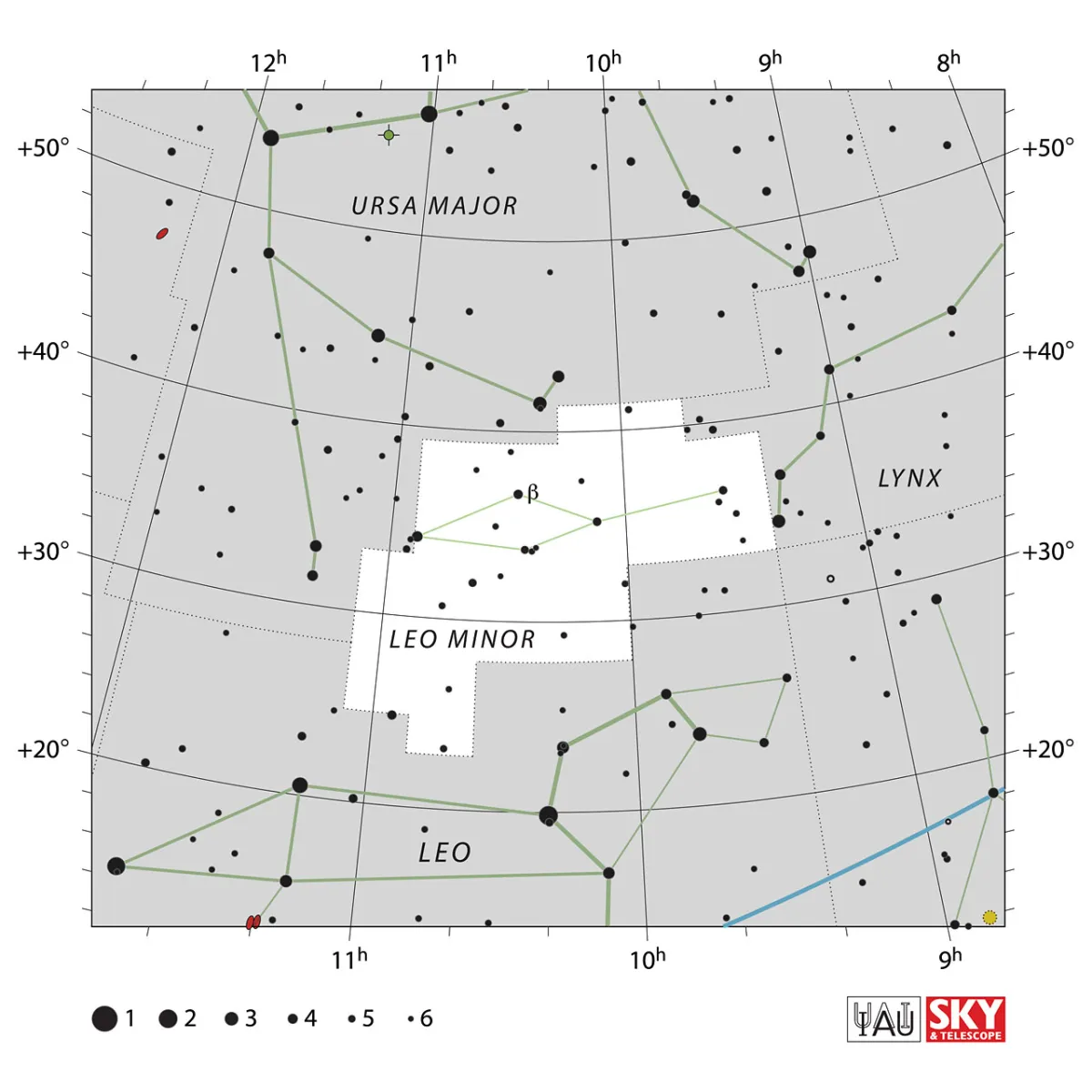Constellation Leo Minor (Lesser Lion)

Properties
Leo Minor lies between the large and bright constellations Leo and Ursa Maior. The amorphous star formation is composed of several weak stars of 4th magnitude. The most striking is a long, isosceles triangle with the base in the south, parallel to the celestial equator. The area is 232 square degrees and the centre culminates around midnight on February 24th. [9, 15]
| 46 LMi | Praecipua |
| IAU Name | Leo Minor |
| IAU Genitive | Leonis Minoris |
| IAU Abbr. | LMi |
| English Name | Lesser Lion |
| Culmination at local midnight | 22 February |
| Season (Latitude +0.0°) | November … July |
| Right Ascension (J2000.0) | 09h 22m 35s … 11h 06m 51s |
| Declination (J2000.0) | +22° 50' 15" … +41° 25' 54" |
| Area | 232 deg2 |
| Neighbours (N↻) | UMa, Lyn, Cnc, Leo |
Deep-Sky Object Descriptions
Catalogues
History
Leo Minor was introduced by the Danzig astronomer Johannes Hevelius in his work Prodromus Astronomiae 1690. The designation of the stars has remained very fragmentary, as most celestial cartographers ignored this constellation. Only the second brightest star was designated with a Greek letter: β Leonis Minoris. The brightest star is 46 Leonis Minoris (Praecipua). [7]